I have already read and tried everything I could find here on the topic in question, but nothing helped or I am not implementing the solutions correctly, so I decided to post a question.
As requested, here is my dataset as well:
structure(list(word = c("byalo", "cherno", "cherveno", "kafyavo",
"lilavo", "oranzhevo", "rozovo", "sinyo", "sivo", "svetlolilavo"
), frequency = c(68L, 68L, 100L, 117L, 137L, 142L, 141L, 240L,
92L, 57L)), row.names = c(NA, 10L), class = "data.frame")
This is the code I am using to get the graphic representation I need:
geom_bar(width = 0.75, stat = "identity", colour = "black", size = 1) +
coord_polar(theta = "x") + xlab("") + ylab("") +
ggtitle("Naming Task Word Frequency > 50") +
theme(legend.position = "none") + labs(x = NULL, y = NULL)
plotly::ggplotly(ggplot2::ggplot(Results, aes(x=word, y=frequency, fill=word)) +
geom_bar(width = 0.75, stat = "identity", colour = "black", size = 1) + xlab("") + ylab("") +
geom_text(aes(label=frequency)) +
ggtitle("Naming Task Word Frequency > 50") +
theme(legend.position = "none") + labs(x = NULL, y = NULL) +
theme(plot.subtitle = element_text(vjust = 1), plot.caption = element_text(vjust = 1), axis.text.x = element_text(angle = 90)) +
theme(panel.background = element_rect(fill = "honeydew1"), plot.background = element_rect(fill = "antiquewhite"))) %>%
config(displaylogo = F) %>% config(showLink = F)
Which gives me the following result:

I would just like for the numbers to hover normally over the bars. I tried messing with vjust, hjust, dodge and other suggestions I found here, but the result was either the same, or it completely changed the form of my graph.
P.S. I am a beginner, I simply need are for some quantitive analysis of data I have collected and am trying to learn only the things I will need to use.
P.S. 2 If anyone has the time to answer, I would also like to know, if there's a way to choose the colour I want each bar to be. But I will admit I have not yet done research on that question.

